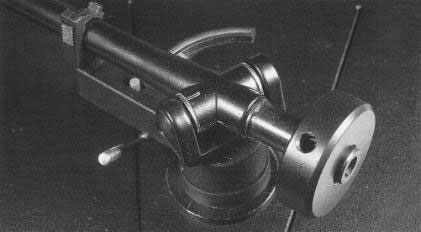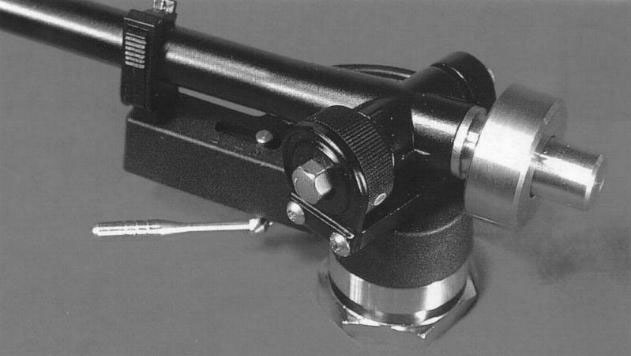Rega RB250 Tonearm Upgrades – Hi Fi World Review
Tonearms of the highest calibre don’t need to be expensive This is a full review from Hi-Fi World Magazine issue February 1999
Armed & Dangerous
David Price examines Rega’s budget giant killers, the RB250 and RB300 tonearms
History
Until August 1983, the best budget tonearm in the world was the Rega R200. An S-shaped, Japanese sourced variant of the mid-price Lustre GST-1, it gave excellent results for its £46 selling price. But then along came an arm with such an amazing price/performance ratio, that the poor S-shaped Rega was never bothered with again. The RB300 had arrived. Radically different to almost anything before, it practically rewrote the book. With a tapered, one piece aluminium cast arm tube with no joins between the headshell and pivot, it was the ultimate exponent of Linn’s `maximum rigidity’ rule. The bearing gimbal was a substantial casting employing a threaded stem and locknut, and the bearings themselves were excellent quality – the same as those now fitted to Linn’s Ekos. Friction was extremely low, and the arm could track the very best cartridges. Even the counterweight was radical, machined from dense tungsten alloy for the smallest possible diameter, and hence the lowest moment of inertia. The new £90 arm was a stunner, matching or bettering expensive super-arms of the time in a number of ways. Its biggest strength was its neutrality, especially in the mid-band, which made Linn’s Ittok (at £253) seem coloured. Press reception was ecstatic, the general feeling being that it was one of the best arms at any price. But as the media buzz died down, dissenters emerged – people began to realise it was cold and rhythmically rather frigid. Its bass wasn’t the best in the business either, and nor was its treble the most extended. Still, the arm’s loudest critics were rival arm manufacturers whose sales it was stealing! The RB250 followed soon after. Essentially a simplified RB300, it enabled Rega to offer a modern tonearm at a cut-throat price. The most obvious change was the deletion of the RB300’s tracking force spring, meaning stylus force had to be set by rotating the counterweight. The new arrival featured brass, rather than stainless steel in its base, a plastic, rather than stainless steel, rear end stub and a cheaper mild steel counterweight. The bearing assembly also differed, being held on both sides rather than just one as with the RB300. Finally, the bearings themselves were toleranced slightly lower.
Tweaking
[1] Arm Wiring
Traditionally the focus of tweakers’ attentions, but there isn’t really that much wrong with the RB300’s cabling. The biggest problem is the internal wiring rather than the arm lead itself, which can be replaced by silver Litz to good effect, but changing the arm to preamp lead will also help. Also, try a separate earth lead, rather than the standard arrangement where it’s earthed down one of the signal return leads. Proper earthing improves low level detail, depth and space.
[2] Tracking Force Adjustment
The RB300, unlike its cheaper RB250 brother, has a carefully designed coil spring to apply a minus force of 3g when set to 0. Unfortunately, this degrades the sound by transmitting resonances from the arm base into the armtube. If you remove the spring, or disable it by setting the adjuster to 3g (i.e. so it isn’t applying any force) and set the tracking weight by the counterweight and a stylus balance, you’ll get more clarity and focus to the sound. However, you may find the counterweight is no longer heavy enough to balance the cartridge. If so, either fit the heavier RB250 counterweight or superglue metal washers to the back of your existing weight to add mass.
[3] Headshell
A popular tweak is to file off the finger lift, if you can bear to live without manual cuing and suffer the vagaries of the lift/lower device. This is because it’s slightly microphonic, and as well as picking up external vibrations and transmitting them to the cartridge, it adds resonance of its own. (It’s no coincidence that the SME V’s lift is detachable!) Another mod is to file the paint off the inside of the headshell, so the cartridge has the flattest possible surface with which to mate.
[4] Counterweight
As counterweights are easily the highest moving mass on a tonearm, it’s vital they’re properly decoupled from the armtube. Unfortunately the Regas aren’t, relying on a floppy rubber ring between the end stub and counterweight, and in the case of the RB250, a plastic rear end stub. Origin Live [023 80442183] offer a £75 structural modification which involves removing the rear end stub (normally just screwed into the back of the armtube) and replacing it with a new one torqued onto the arm by a high tensile bolt. The counterweight is then drilled and threaded with an Allen bolt, which can then be screwed into the rear stub rigidly. This decouples the counterweight from the armtube, meaning it doesn’t muddy the sound. Although this is major surgery, just bolting the counterweight onto a standard end stub isn’t enough, and can degrade the sound.
[5] Mounting
Fortunately, the Rega is a light arm that doesn’t disturb the suspension on suspended sub-chassis decks, but it still needs careful installation. It sounds best when fairly loosely tightened to the armboard, which decouples it from its noisy surroundings. It’s also important to dress the arm lead with the deck’s P-clip so the suspension can float freely. And ideally the cable between the P-clip and the preamp should just hang in mid-air, so it can’t pick up (and thus transmit) vibrations into the arm and the deck.
[Below] The unmodified RB300 has a screw-in rear stub along which slides the counterweight, decoupled by rubber rings. 
Listening
Installed on a Michell Orbe turntable and tracking an Ortofon MC30 Supreme, the standard RB300 is an impressive but not flawless performer. Compared to a cooking RB250 it’s quite an improvement, but against an SME V it has a light, lumpy and at times semi-detached bass. Mid band is fairly uncoloured with good detail retrieval and imaging. Treble isn’t bad but ultimately a bit coarse and rolled off, loosing air and space compared to the SME reference. With the tracking force spring disabled the standard RB300 gains clarity in the midband and treble, but it isn’t until surgery is performed that it begins to sing. A silver Litz rewired Rega gains fluidity as well as a smoother, more spacious treble. Contrary to Rega’s claims, it is worth rewiring the arm as long as it’s done properly. The most interesting Rega tweak on audition though is Origin Live’s counterweight modification, which catapults it into super-arm territory. Compared to a standard RB300, the OL/RB300 gains deeper, more extended bass with improved grip. Midband is clearer and more detailed, and treble beautifully open and sweet. But most significant are rhythms and dynamics. No longer cold and frigid, the arm becomes as fluid and beguiling as a good unipivot. Compared to the SME V, the OL/RB300 can’t match its bass power, dynamics and treble extension, but gets noticeably closer. Indeed, the mid band actually overtakes the SME. While it lacks the latter’s archaeological detail digging ability, it’s definitely more lucid and musical. Treble is superb too, but again not as clinically detailed as the SME’s. On some kinds of music, jazz in particular, the OL/RB300 cleans up. Music ebbs and flows effortlessly, and unlike the Series V isn’t showy or pushy. But the real ear-opener is an Origin Live modded RB250, which because of its superior bearing mountings and brass base, has quite a different character to its bigger brother. Compared to the OL/RB300, bass is dramatically tighter and more powerful, while the mid-band also gains great gusto. Dynamics are absolutely first class, and soundstaging and imaging stronger still. There’s also quite a change in the arm’s tonal character. It’s much darker and more natural than the RB300, which by comparison sounds a touch glassy and chrome plated. The OL/RB250’s combination of inky black silences, holographic imaging and kick-butt bass is a joy. With all the mods, from silver wiring to the Origin Live rear stub, the Rega RB250 is total dynamite, nothing less. As analogue addicts know, there’s no `best’ super arm. Some like the SME V’s clinical precision, others the Linn Ekos’s kick or the beguiling rhythms of Naim’s ARO or Graham’s 2.0. But whatever your preference, you’ll be gobsmacked at how good the humble Rega tonearms can be made to sound with clever fettling. Suitably tweaked, the RB250 especially can take on the very best. This is a testament to Roy Gandy’s remarkable original design.

